Today is International Women’s Day. Normally, I would post about how the systematic prejudice against mares jeopardizes their welfare. This year, however, I decided to write about stallions, because the forced social isolation of stallions is a major welfare issue and it is high time we address it.
In their 2021 review paper Keeping Stallions in Groups—Species-Appropriate or Relevant to Animal Welfare?1, Gehlen et al. looked at 50 sources, both peer-reviewed research papers and other publications, detailing aspects of stallion management from 1990 onwards. They found, depressingly but not surprisingly, that most stallions are kept in individual housing.
This is rarely done out of malice, of course, but rather due to a misguided fear of injuries, lack of appropriate facilities, or for human convenience. Still, it puts them at risk of behavioural problems such as stereotypies and aggression, and is a major welfare issue as reviewed by de Oliveira and Aurich (2021) in Aspects of Breeding Stallion Management with Specific Focus on Animal Welfare.
This is particularly frustrating as both science and practice supports group housing of stallions, either in same-sex groups or breeding groups. There are plenty of breeders and owners who successfully allow their stallions to live species-appropriate lives.

Throughout this post you will find photos of stallions living in groups and engaging in social interactions. They were sent to me by owners, breeders, and equine professionals after I put out a call on my Instagram page. I have been given permission to use them to showcase some positive examples of stallions living rich, social lives, and I am very grateful for this.
Domesticated breeding stallions can live in groups
In 2009 and 2010, the Swiss National Stud decided to put their breeding stallions together in groups and enlisted the help of behavioural researchers to document the process. The results were published in the 2013 study Pattern of Social Interactions after Group Integration: A Possibility to Keep Stallions in Group by Briefer Freymond et al.2
Spoiler alert: it went beautifully!
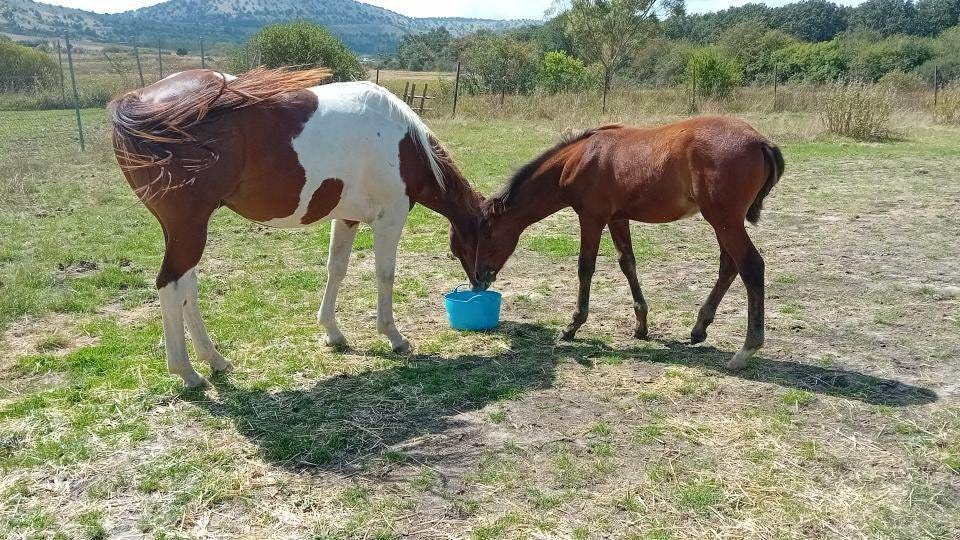
The 2009 group consisted of five stallions, while the 2010 group consisted of eight stallions, four of which had been part of the 2009 group as well. All stallions but one were familiar with each other through seeing each other on the premises and/or being harnessed together for work, but prior to 2009, no stallion had lived in a group.
In both the 2009 and 2010 trials, the stallions were first stabled next to each other for two weeks so they could see, smell, and touch each other, and turned out individually. After two weeks, they were released together in a large, four-hectare field. In 2009, none of the stallions had any previous experience living in a group, while in 2010, four of the stallions had lived together during the previous season. The stallions were kept in these group constellations for six months.
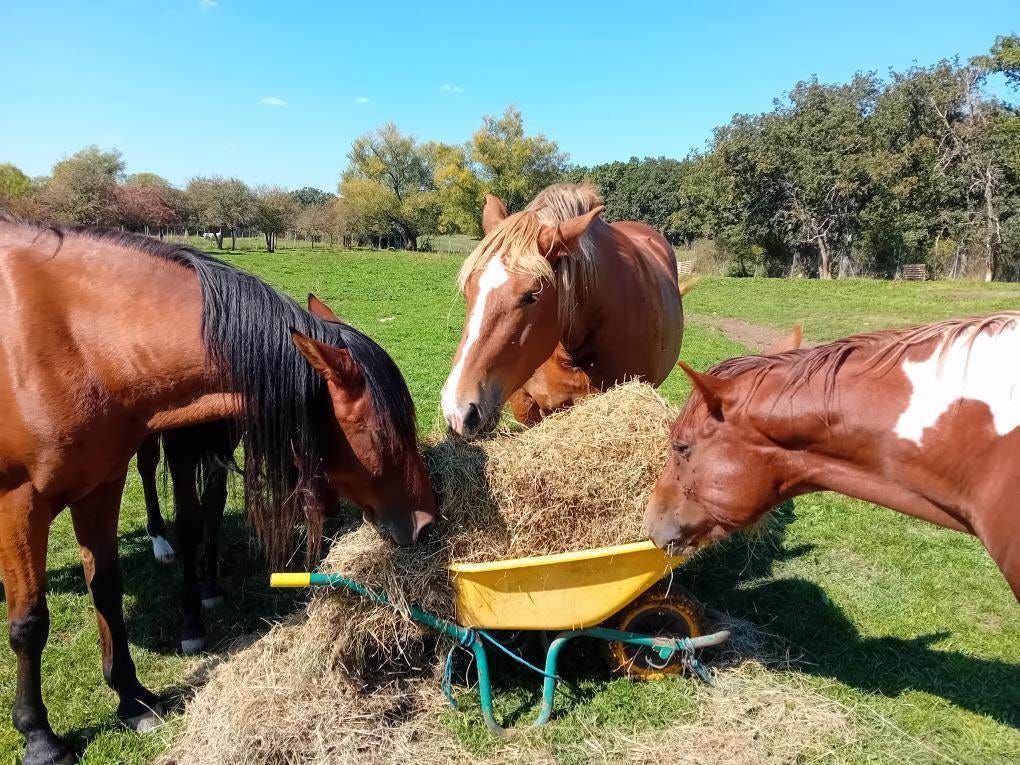
The researchers observed and measured the frequency per hour of agonistic, ritualised, and affiliative behaviours (see screenshot of their ethogram below), for the first 23 days in 2009 and for the first 17 days in 2010, giving a total of 109 hours of observations for each stallion in 2009 and 87 hours in 2010. For every interaction they also recorded which individuals were involved. This is an impressive amount of data and level of detail!

When analysing the data, they found a sharp decrease in both agonistic and ritualised aggressive behaviours over the first couple of days, with a continuous decrease over the following weeks, in both 2009 and 2010. Interestingly, the frequency of agonistic behaviours was lower in 2010 among the stallions that had experience of group housing from the previous year.
In summary, the main results were:
Both ritualised displays and agonistic interactions decreased sharply in the first few days and then continued to decrease, remaining at a very low level for the duration of the observations.
Affiliative interactions increased in the first two weeks and then decreased again.
Stallions with previous experience of group housing engaged in fewer interactions overall.

In addition to agonistic and affiliative interactions, the researchers also assessed dominance rank relationships once a month for the first three months, in both the 2009 and 2010 group. To do this, they placed a bucket of carrots between every possible pair of stallions and noted who got to eat first. Based on this, they calculated the dominance rank for each stallion, and found that it took 2-3 months for the dominance hierarchies to stabilise.
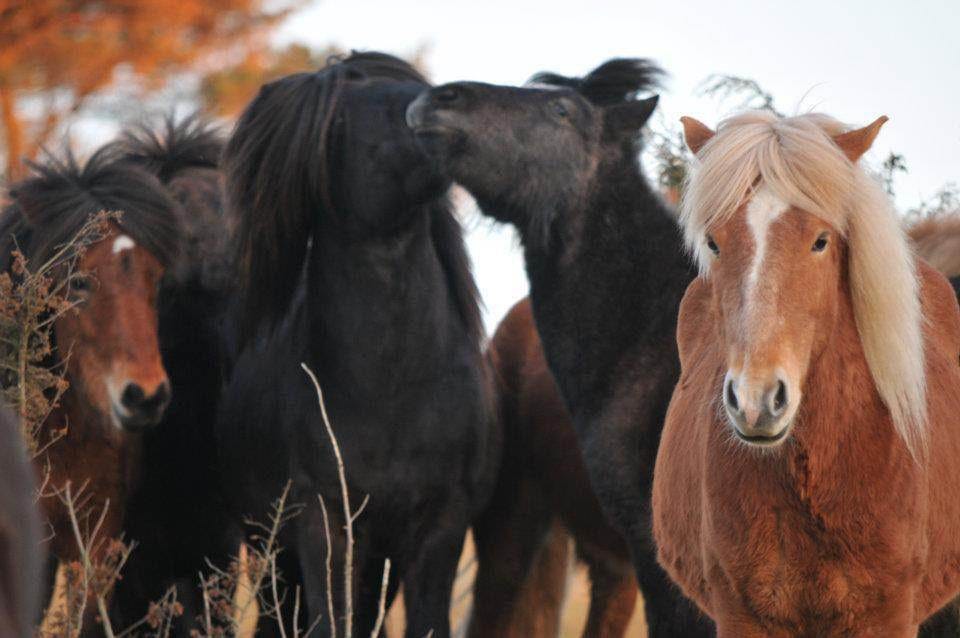
There are some limitations with this, in my opinion. Dominance rank can vary depending on the type of resource and the motivation of an individual to access that resource, so basing dominance assessments on one interaction over one resource may not give an accurate picture. Additionally, assessments were not continued in months 4, 5 and 6, so we cannot say whether there were any further fluctuations in dominance relationships after the study concluded. Based on this study, however, it is reasonable to say that it can take many months for a new social group to stabilise.
The effect of dominance ranks on social interactions was not clear: in 2009, the higher-ranking stallions engaged in more affiliative interactions and fewer ritual displays than those with lower ranks. By contrast, in 2010, the lower-ranking stallions engaged in more affiliative interactions whereas the middle-ranked stallions engaged in more ritual displays. This indicates that there is something more complex going on here. I would guess that the dominance ranks assessed by the experimenters is not an accurate representation of the relationships between the stallions.
Other ways to increase social interactions
Briefer Freymond et als. study demonstrates that it is possible to introduce domesticated breeding stallions to group housing safely and successfully. Importantly, it also shows that social skills are learned and improved upon through repeated exposure to social interactions, even in adulthood.
So, while I firmly believe that it is possible to rehabilitate adult stallions that have been kept in social isolation for most of their life, I would like to make the case for allowing colts to build social skills from the start.
Colts that grow up in stable social groups and develop emotional regulation skills, communication skills, and social problem-solving skills at a young age will likely be better at navigating more complex social environments even as breeding stallions, and will require less re-socialisation with fewer risks of injury.
Of course, there may be practical reasons why a breeder cannot immediately release all of their stallions into the wild just because I wrote a Substack about it. In these cases, a more open stable design can be a useful intermediary stage: a 2023 study by Zollinger et al., Social Box: A New Housing System Increases Social Interactions among Stallions3, found that friendly social interactions increased when stallions were able to touch each other.
(Incidentally, this study was also done at the Swiss National Stud, who seem genuinely interested in improving the lives of their breeding stallions and contributing to ethological research - kudos to them!)

No horse should have to live alone
But if you truly have a stallion that can’t be kept in a social group, what then? Well, then you castrate him and put in the effort to re-socialise him. He does not owe you breeding, but you owe him a good life.
If this seems dogmatic, that’s because it is. I generally try to avoid imperatives, but this is one case where I believe it is warranted from an evidence-based and ethical standpoint: no horse should ever have to live in social isolation. The good news is that, with appropriate preparation, most stallions can be kept in species-appropriate social environments without risk.
Because stallions are horses, and they have the same social needs as any mare or gelding. Thanks to decades of ethological research we know that stallions interact and communicate with each other in complex ways. They form alliances with each other, bond with their mares, and play with their foals. If given the opportunity, they will live rich lives – and we owe them that opportunity.
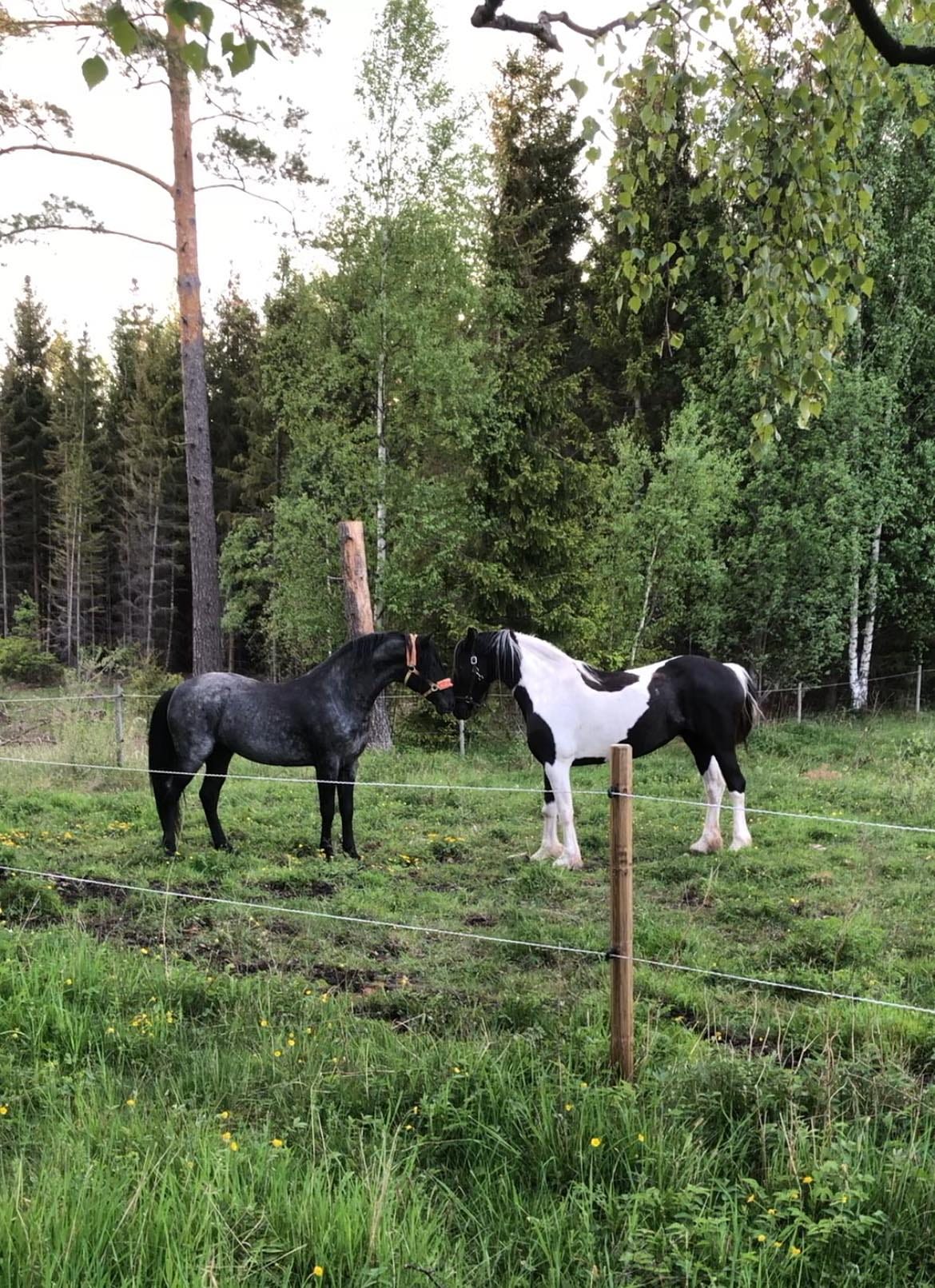
All opinions expressed here are my own.
This post is free for anyone to read. It takes time and effort for me to write these posts, so if you liked it or found it interesting, please consider commenting, sharing it with a friend, or sharing it on social media as a thank you! And if you want to get notified when I post next, please consider subscribing. That’s also free!
Gehlen H, Krumbach K, Thöne-Reineke C. Keeping Stallions in Groups—Species-Appropriate or Relevant to Animal Welfare? Animals. 2021; 11(5):1317. https://doi.org/10.3390/ani11051317
Briefer Freymond S, Briefer EF, Niederhausern RV, Bachmann I (2013) Pattern of Social Interactions after Group Integration: A Possibility to Keep Stallions in Group. PLoS ONE 8(1): e54688. doi:10.1371/journal.pone.0054688.
Zollinger A, Wyss C, Bardou D, Bachmann I. Social Box: A New Housing System Increases Social Interactions among Stallions. Animals (Basel). 2023 Apr 20;13(8):1408. doi: 10.3390/ani13081408.





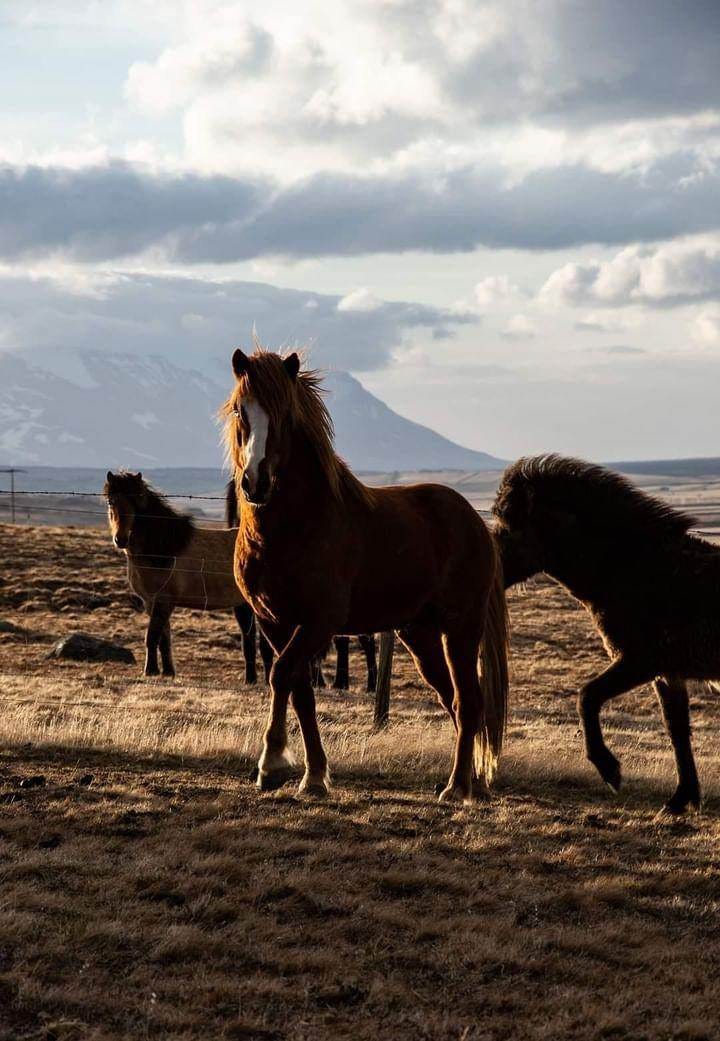
I 1000% agree! I kept my breeding stallion with his half brother until hi was 3, & then would let him run with the mares & foals during the winter. And then put the weaklings with him when separating the foals from mom. He is the most sane well behaved horse I’ve ever had the pleasure of working with!
Hello Renate
I have the Substack The Thinking Horse Breeder. It appears I am unable to message you directly, even though I am a subscriber of your page. I just want to give a shout out to you for your work, and I have also recommended your work on my page. I would be really pleased if you could take a look and recommend my Substack in return. Many thanks.